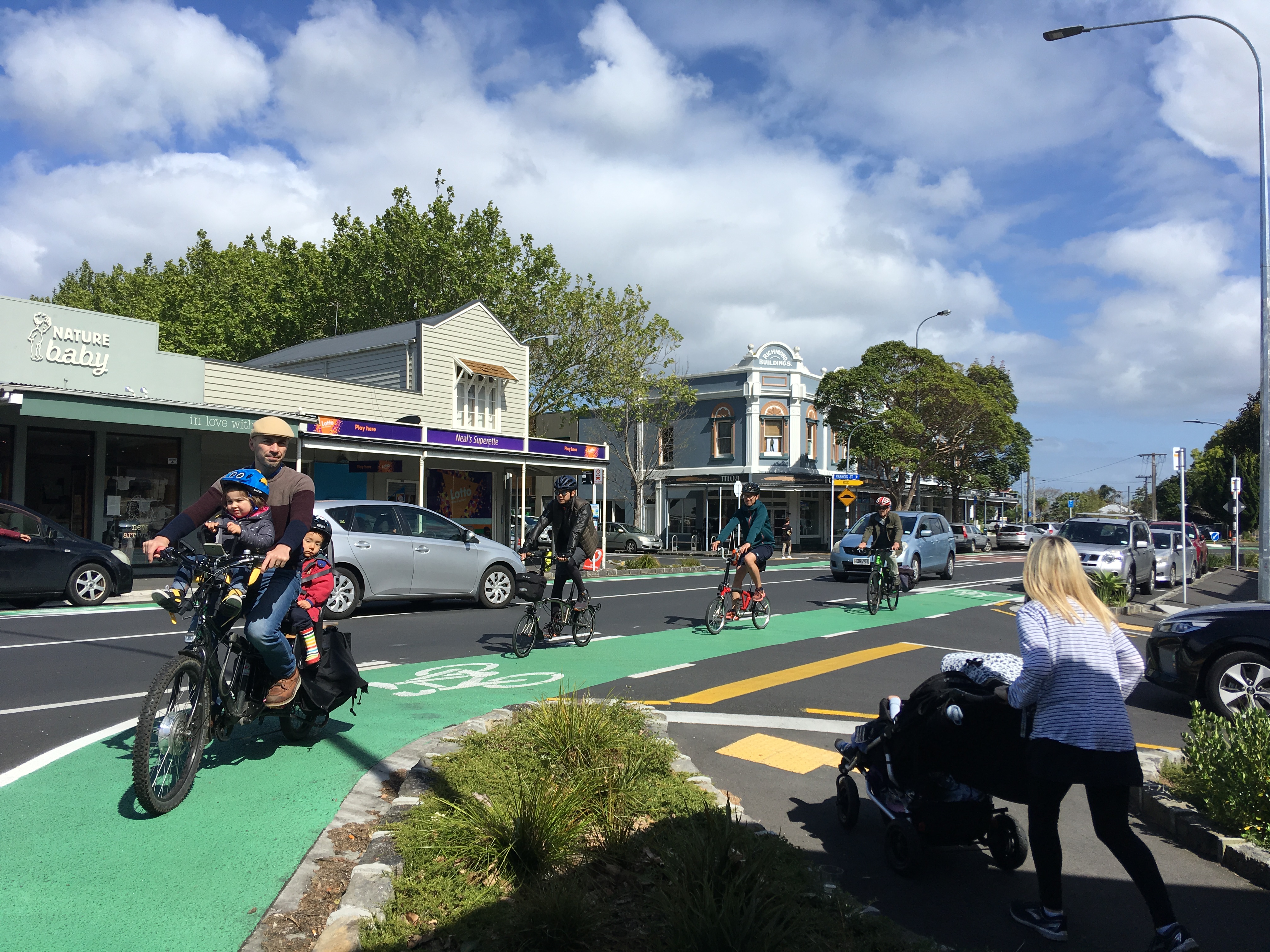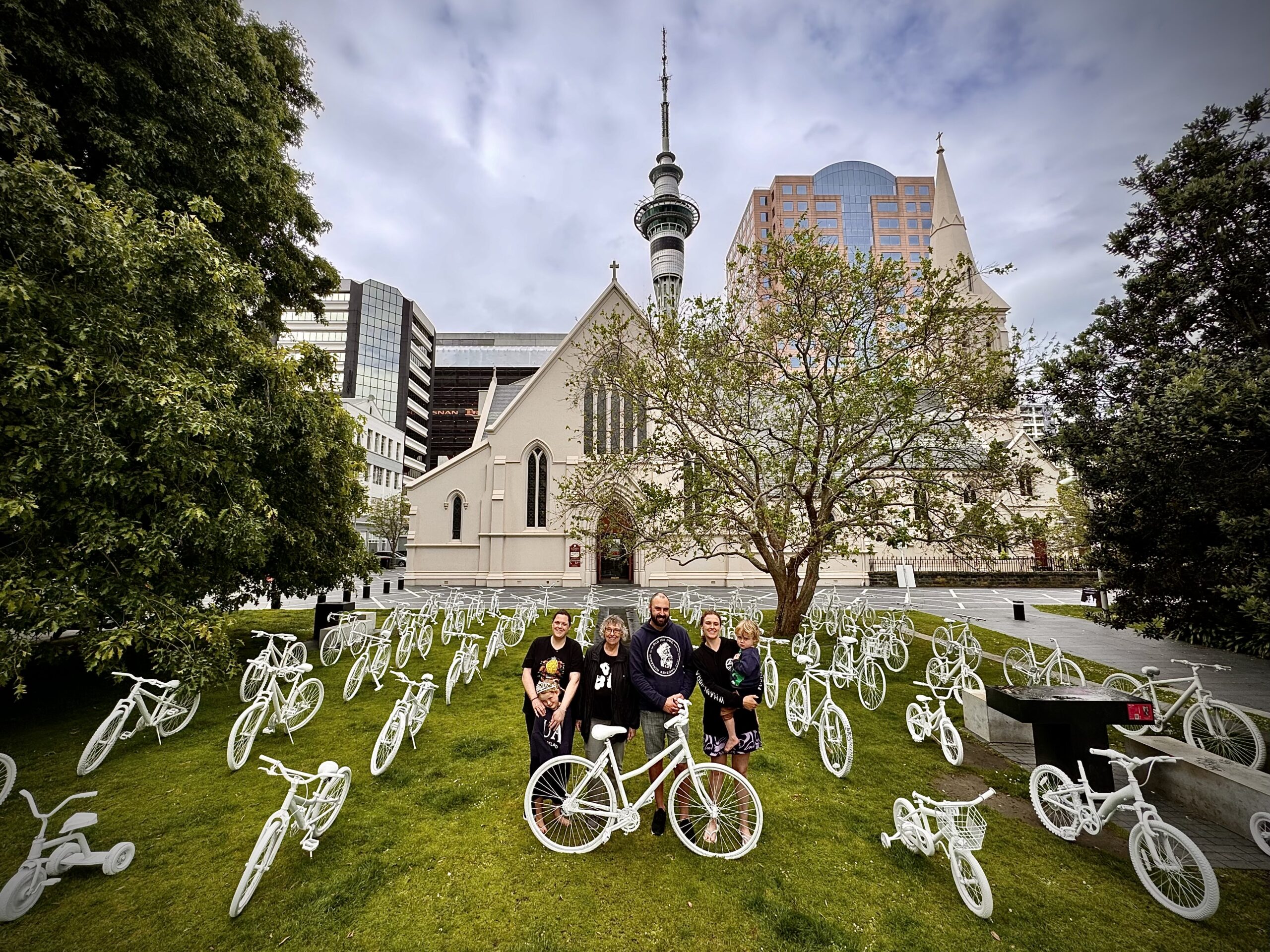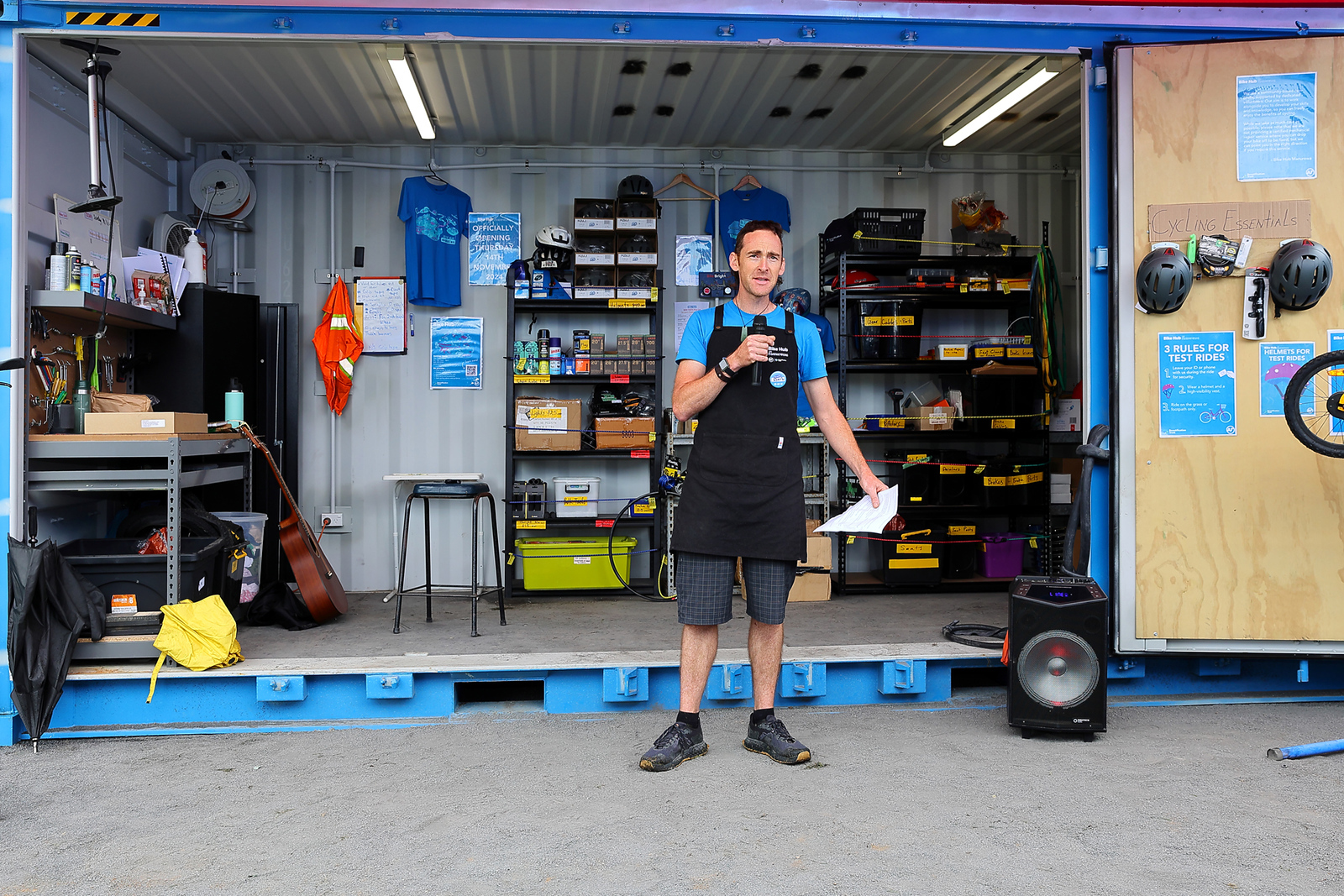Cities: sometimes they barely inch forward… and other times they proceed by leaps and bounds. And sometimes, when a place is catching up with what its people need, it’s leaning into the future, dragging its heels, and being blown inexorably forward – all at once.
Consider this transformational triple-whammy:
- Searches on Trade Me for e-bikes shot up by 40% in seven days. New fuel tax, spring weather, seeing your friend on one – who knows? It’s happening. And with already roughly 40,000 e-bikes on our streets, the electric vehicle revolution is already here.
- Enter the shared e-scooters: a whole new species of nimble transport. Neither fully at home on the footpath nor on the road, they highlight the urgent need for safe space for people-scale mobility devices that are neither fish nor fowl.
-
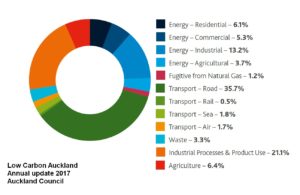
Low Carbon Auckland annual update 2017, showing our sources of carbon emissions. And, in case you missed it: the IPCC urged ‘unprecedented changes’ to everyday life – including everyday transport, which makes up over a third of Auckland’s carbon emissions. We have around 12 years to keep climate change within manageable bounds – barely. As the New Zealand voice on the IPCC panel says, it’s ‘the end of magical thinking that we can somehow put this off.’
It’s clear people are urgently seeking more transport choice and congestion-free, carbon-light travel options. With more of us living closer together, we also need cleaner air, healthier streets, safer neighbourhoods with slower speeds, and always, more city trees. It’s a citywide problem with citywide solutions.
We can achieve this if we want to. And we have to. Because the future is coming, ready or not.
A design for living
So, what will that future look like – and what role will transport play in shaping how we live, thrive, and survive? We’ll see soon: when the new designs for the Waitemata Safe Routes through Grey Lynn and Westmere come back to the public in mid-November for consultation.
The biggest and best news is this is no longer (just) a ‘cycleway project’. It’s a total rethink of the vibe of our streets and our neighbourhoods. Inspired and powered by the vision of a place where it’s safe and pleasant for any kid or adult to ride a bike, this elevated design promises a positive outcome for every kind of person.
Delivered right, this project will set a gleaming example for communities all over the city: Auckland as a ‘city of villages’ reimagined for the 21st century.
The new proposals, designed by urban design consultants Boffa Miskell with Auckland Transport, have been worked on all year with input via surveys, observations, and two community liaison groups. They’re now getting final design tweaks before coming back to the wider public for feedback. We understand the consultation material will be first class; for now, here’s what’s already in the public domain.
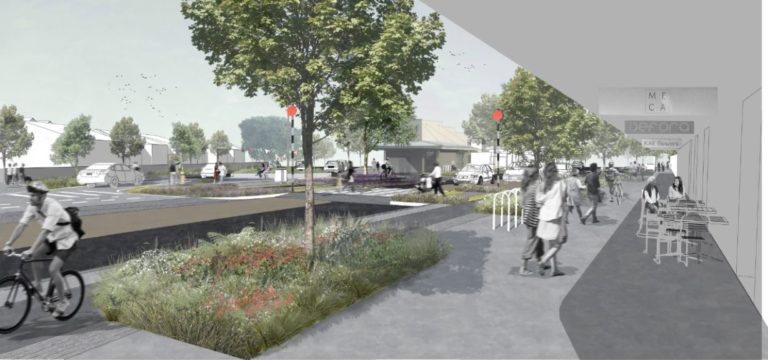
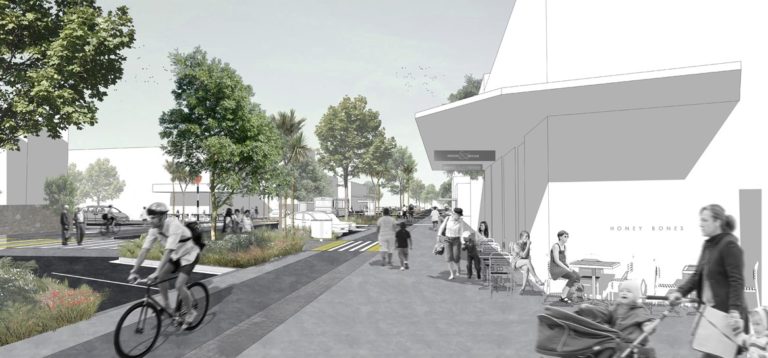
But these two grey-green glimpses barely begin to tell the story of what’s in the new designs:
- The new designs put pedestrians first, with raised crossings over side streets – great for walkers and joggers, handy for kids on stride bikes and scooters, life-changing for people with prams and wheelchairs – and more safe crossings
- The schools and town centres on the routes get safety treatments, including great bikeways, better footpaths, raised crossings, and raised tables to slow vehicle speeds.
- Not only are existing trees preserved, a whole lot more trees are added along the entire route. The Boffa designs found space for 80+ new trees; let’s hope they all make it through the consultation process.
- Warm and welcoming ‘gateway’ treatments for the shopping areas invite you to slow down as you’re in the village now. Also mooted in the Boffa design: high quality footpath materials and street furniture.
- A signalised intersection at Surrey and Richmond is safer for all, with clear movements for walking and biking, connecting the school and a whole lot of homes and apartments to the West Lynn shopping village.
- A reshaping of the Old Mill Village intersection, to slow traffic, create more of a village feel around the shops, and provide safety for the streams of school children who navigate through here on foot daily.
- Amazingly, car parking is also preserved wherever possible. There’s also potential for more parking around the shopping village, for those who might be worried that loss of parking will stress small businesses.
- And of course, the design creates safe and pleasant routes for people on bikes: handsome, separator-protected bikeways along the main roads, and raised Copenhagen-style bike paths through the shops and past the schools, all planned to hook in to the wider network, creating a connected web of arterial routes to bring people safely to schools, shops and businesses, and along the ridge routes into the city and onwards into neighboring suburbs. Once Great North Road and K Road are in the mix, you’ll be able to bike safely from Grey Lynn to the city centre, university precinct, hospital, the Domain, and beyond, on city streets.
The new designs are not just better than the previous compromised version. They’re exemplary, worth the wait, and deserving of wholehearted support.

A question of value
Of course, the budget has expanded to match the design values. AT has suggested a new range of $17-22m to deliver this project – and contrary to some early reporting (which also erroneously stated a higher range), only a fraction of that rise comes from better bike facilities or from fixing earlier works.
Copenhagen-style bikepaths through the shops do cost more than plunking concrete separators on the road. Concrete or paver footpaths cost more than asphalt. And 80+ trees need someone to plant them. But at the end of the day, this is the icing on the cake.
The real cost – and real, enduring value – comes from changing the entire streetscape for the better. This is about fixing 50+ years of road design for cars to make it safer and more pleasant for people, whether they’re on bikes, walking, living there – or driving through.
Here are just some of the bad habits that need fixing:
- Street corners on wide streets that have been curved and carved so drivers can swing into side streets at speed, without any cues whatsoever to slow down or watch for kids – fixing every corner and side street adds up.
- Moving kerb lines (and utilities like water and power) to widen footpaths and create space for greenery and bike paths – this gets expensive, fast.
- Want better footpaths and safer side street crossings? Great, but add it to the budget (given the previous iteration of this project barely touched the footpaths at all).
- Need more (or any) safe places to cross a busy street? A raised table over a single slip lane can cost over $50,000, and on a road with three or four lanes (including parking), the price of a raised zebra crossing rises proportionately.
- And so on.
The total is still a still a tiny fraction of what is constantly spent rebuilding intersections and widening roads, which never rates alarmist headlines. And it will be worth it the first day a person isn’t killed while simply crossing the road to school or to catch a bus.
Nobody wants to be on either end of a crash like that: all of these safety upgrades help drivers too. Our road safety record, while especially dire for people on foot and on bikes and motorbikes, is not rosy for car occupants. Safer, more humane streets help us all make it home in one piece.

A place to live in, not just travel through
Safety changes are still only half the equation in Grey Lynn: this is also about creating a place that’s lovely to be in.
The shall-we-say ‘functional’ design the first time round didn’t exactly inspire delight. Some even felt it had ‘destroyed’ the heritage shopping village. Last we looked, the village was doing okay, but there’s no question that tricks were missed on the design side. Rubber bumper wheel stops for parked cars; improper drainage design; a blank asphalt slope where planting would have been perfect – these didn’t win any favours in the hearts and minds department.
Whatever the range of views in the community liaison group, it was clear that everyone wanted a higher quality outcome, one that paid attention to the feel of the neighbourhood and looked as good as possible. Of course, as with a home renovation, if you want nicer materials and better quality finishes, it’ll cost more. Using a solid kerb or a Copenhagen lane to separate cars from bikes is more expensive than a row of plastic posts – but it’s also much better-looking, longer-lasting, and less in need of constant maintenance.
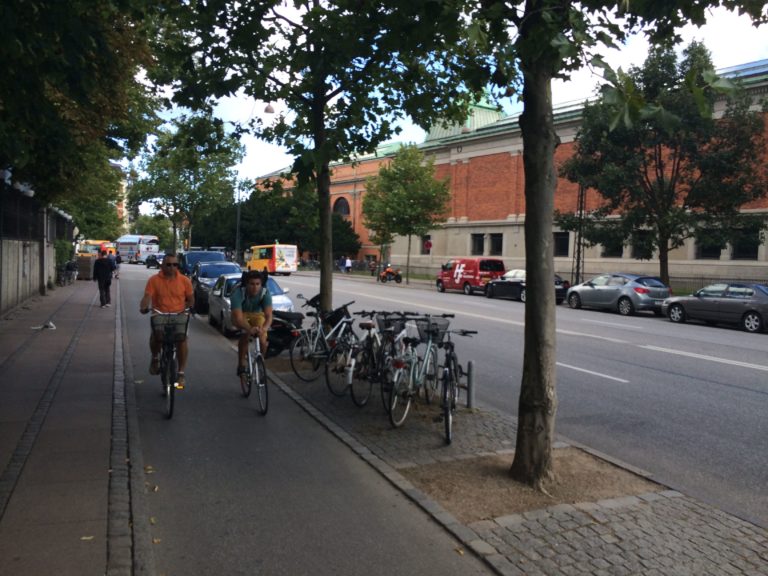
However, what really drives up the costs to headline-grabbing numbers that people find hard to square with simple bikeways is doing all of it in one go, after decades of neglect. Road safety, multi-modal access, utilities – street lighting, electricity, stormwater – and placemaking. In Grey Lynn, all of this now has to happen at once, in one project.
Which is why it’s time all of us, including the headline-writers, need to move beyond the word ‘cycleway’ and stop using it as a lazy lightning rod for outrage. Comparing the cost of this full street renewal with the initial price tag for simple bikeways back in 2014 is like comparing a quote for building a whole house in 2018 with an estimate for a garden shed four years ago.
This is simply what it takes to transform our streets into safe, healthy, sustainable, beautiful, 21st century people-friendly streets. And we can’t afford not to. Getting a neighbourhood right for every kind of person – young, old, two-wheeled, driver, driven, public transport user; able-bodied or mobility challenged; resident, visitor, tourist, worker, shopper – will be priceless.
Setting an example
Most importantly, by finally bringing urban design to the table, Auckland Transport is about to lift the definition of what our streets can be.
Doing nothing is not an option here: the situation in Grey Lynn needs fixing. Keeping things ‘as they are’ would send us further down an unhealthy path. Scooters and bikes on footpaths amongst pedestrians, or pushed onto roads amongst cars. More SUVs outside schools. Fewer kids and families walking and biking to school, shops and sports. A less connected community. More emissions, more ambient pollution. A steadily rising road toll.
Moreover, we’re going to need a successful model project for neighbourhood streets as AT’s Cycling Programme Business Case steadily works its way across the city – starting with the inner city burbs and key transport and employment hubs, according to the current plan. Mangere’s collaborative Te Ara Mua/Future Streets project has broken important new ground in looking at how adding walking and cycling transforms a community for the better; now we need a fundamental vision for complete streets – and healthy streets – wherever and whenever our roadways get refreshed.
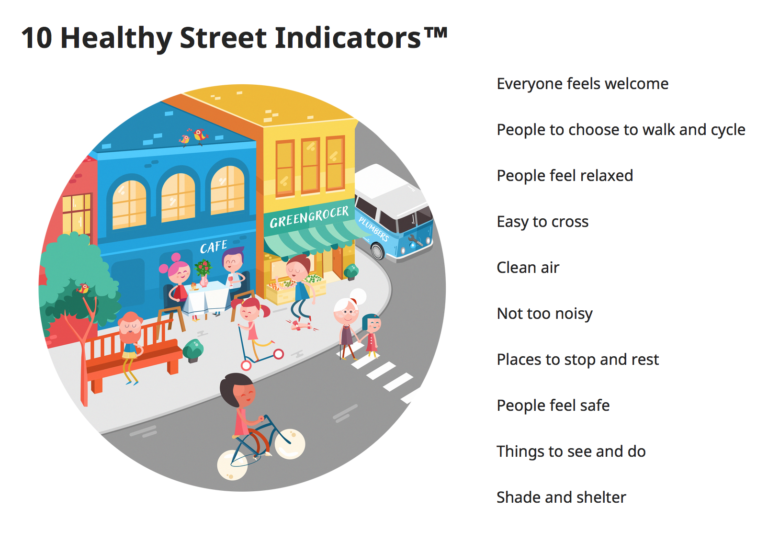
By contrast, doing something truly beautiful here will set the tone for AT’s task ahead. With challenging conversations about speed management on the horizon, AT is going to need to show people the ‘why’ story, and fast. Why are we changing our streets? What does a neighbourhood look like when its roadways are not just funnels for cars, but truly match its vibe and values? What does a community feel like when people can freely choose to walk, bike, scoot, run? When you don’t constantly have to bundle your small children into your car, or out of the way of someone else’s?
Here’s a chance to find out. An opportunity to embrace a fine-grained neighbourhood experience – one that restores the out-and-about, meet-and-greet vibe of yesteryear, while creating new ways of living closer together, closer to the city.
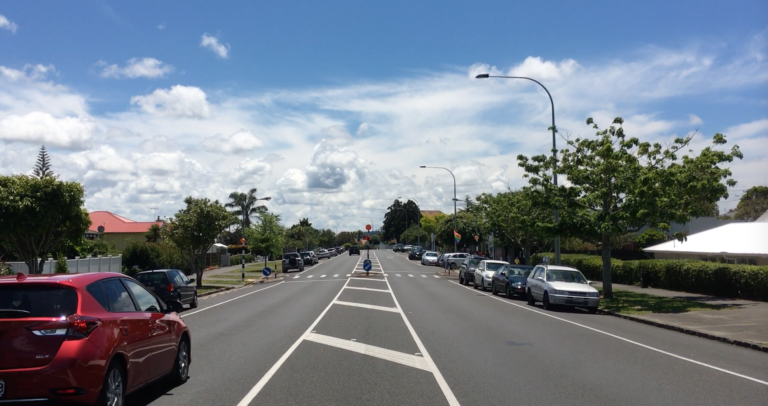
Why here, why now?

Grey Lynn stands poised to be an exemplary upgrade. Close to the city centre, it’s a busy burb with a growing need for ways to move that don’t clog the streets. A twenty-minute bike ride from the city centre along easy ridge routes via the forthcoming cycleways on Great North Road and Karangahape Road. Less than an hour’s stroll to town, if you’re trying to get your steps in.
Grey Lynn also has one of the city’s highest bike-to-work rates: ~4% at the 2013 census, before the current bike boom began, and surely heading higher since then. Wherever adults ride regularly, we know children will want to ride, too – and with multiple schools and kindergartens along the planned routes, there’s massive potential for freeing locals from loading kids into the car for every short daily trip.
So you could flip the question about what it will cost – and ask what will it cost us not to get this right? Above and beyond the price of fuel, the cost of sedentary lives, the curtailing of children’s freedom of movement, and the ever-looming climate crisis, there’s a compelling story to tell about quality of life itself. London’s ‘Local Holland’ projects are literally extending children’s lifespans. Can you put a price on that?
As we wrote previously on this subject: there are some 4,000 children at various schools along the routes up for construction from town to Point Chev. They’ll live with the results of this project a lot longer than the rest of us will. They’re already living with the results of decades of neglect and inaction on our streets. And we live with driving them everywhere, when they’d prefer some independence and we’d love the confidence and freedom of allowing them to travel under their own steam.
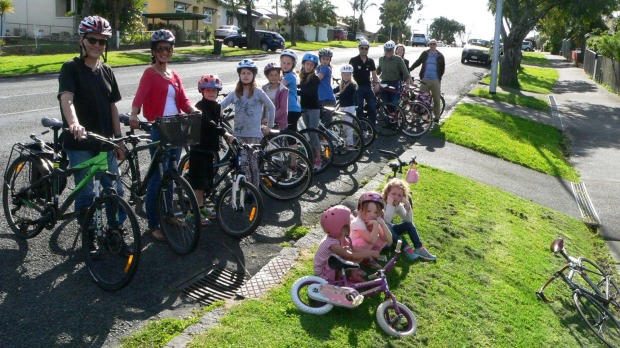
How we get there
So this is exciting. It’s also – let’s be clear – a big ask for everyone who lives, works, and goes to school here to put up with more works. Like any construction project, while we all stand to benefit, it’s locals who bear the brunt of the digging up and putting back.
The local shops – in the West Lynn village, at the corner of Surrey and Richmond, at Old Mill and Garnet Rd, and the dairies and cafes dotted along the way – are going to need some extra love. Wee shops are especially vulnerable to changes, like when big supermarkets pop up around the corner.
That’s why regular foot traffic will be crucial through the construction period. Locals, whether walking or catching the bus, and people on bikes, who find it easy to stop and shop, will play a crucial part. And of course there will be more of all of this kind of shopper once the project is complete.
The Grey Lynn Business Association is leading a visionary project to activate and animate the neighbourhood, and we’re warmly encouraging the wider bike community to support any and all local events, because the last thing any of us wants is fewer great little local shops to walk and bike and scoot and bus to.
A chance to feel the difference
One of the biggest challenges when making the case for change is that it’s so easy to see what’s already here. You can see it, feel it, smell it, taste it, touch it; you’ve developed habits around it. It feels permanent, unshiftable.
Feeling your way into the ‘After’ picture is trickier… but really comprehending that sense of possibility – and its payoffs – is priceless. Artists’ impressions, like the ones above, give a sense of what’s possible where we live, work, and play, but they don’t activate all five senses. And they don’t ring cash registers.
Luckily, we sometimes get a chance to experience that virtual reality of how much better things could be. For example:
- on holiday in small towns and beach towns, where we revert to barefoot wanders and bare-headed bike rides to the shops, parks, and friends’ houses.
- on rail trails, where remember what it’s like to pedal for miles without fear or stress;
- overseas, where we exclaim over the charming pedestrian-friendly streets of great cities;
- in the height of summer, when Auckland’s streets empty out, and local ‘hoods come alive with bikes again.
- on holiday weekends, and increasingly these days, on every weekend.
In October, the Grey Lynn Farmers Market turned its adjacent car park into play space for people and actively welcomed people on bikes. In a space that normally housed 22 parked cars, there were stalls, tents, a whole lot of bike parking, and children playing and riding around on small bikes and scooters. Over the course of the morning, a steady stream of people arrived on bikes. If you build it – even for a single day – they will come.

A group ride toured the local greenways, and the existing functional bikeways, which served their purpose.

The tour revealed a thriving local bike culture. In Grey Lynn Park, the famous pump track was pumping, as it does every weekend and after school, and the line-up of bikes at the junior playground told an irrepressible story. Give young Aucklanders a bit of sunshine, two wheels, and a place to ride to, and – well, try and stop them.

Back at the community centre, the market was still buzzing – and so were the village shops. As people headed home from the farmers’ market, there was a parking crush outside the local grocery. Always room to squeeze one more bike in, though.
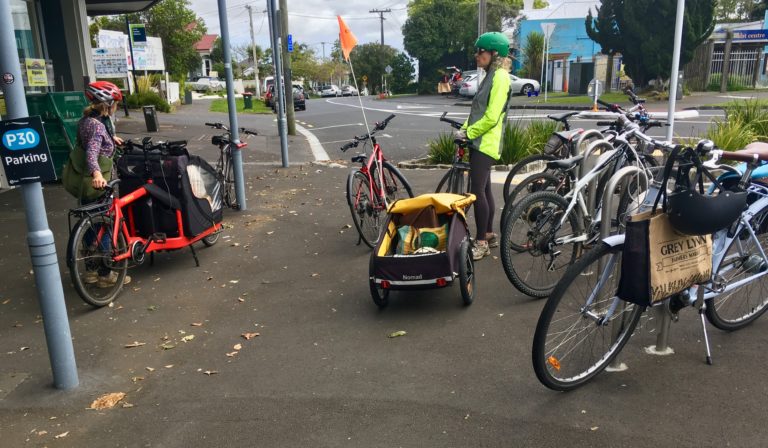
For one day, people enjoyed a real-world glimpse of what a truly walkable, bikeable village might feel like – and why it would more than repay the temporary disruption it will take to bring it to life.

Let’s do this
This liveable future is within reach, if we want it, all over Auckland – and courage and cooperation will get us there. Kudos to AT’s walking and cycling team and Boffa Miskell for shepherding this fresh design through to consultation with good humour, able teamwork, epic patience, and stellar design!
Recall, too, how the very new CEO, Shane Ellison, came to Grey Lynn and expressed AT’s ‘unwavering commitment’ to making Auckland a better place to bike. The promise is there. Now, AT is offering to step up its game and deliver an exemplary project swiftly, tidily, and to the best of its abilities.
So it’s over to us, once the consultation opens in coming weeks. Are we ready to move beyond the noise and look to where we want to be this time next year – and beyond? It’s 2018: are Aucklanders ready to say yes to being a city of 21st C villages?

